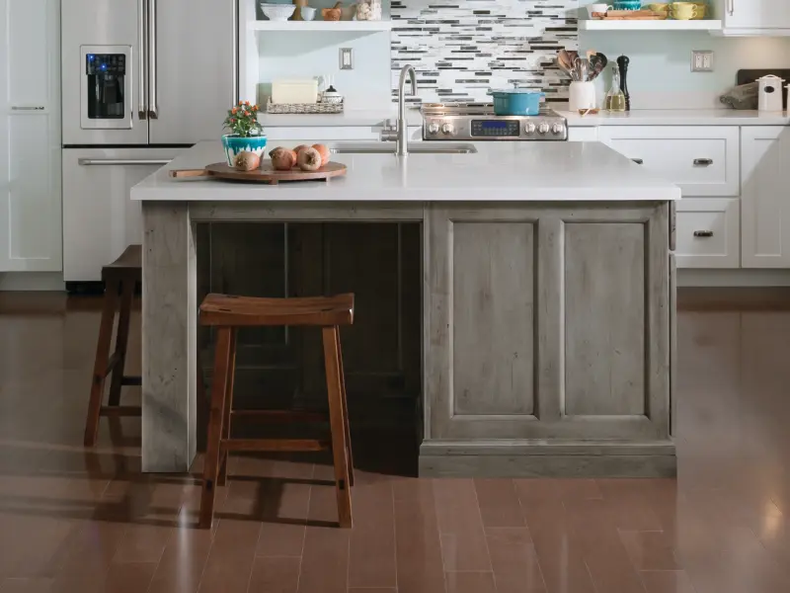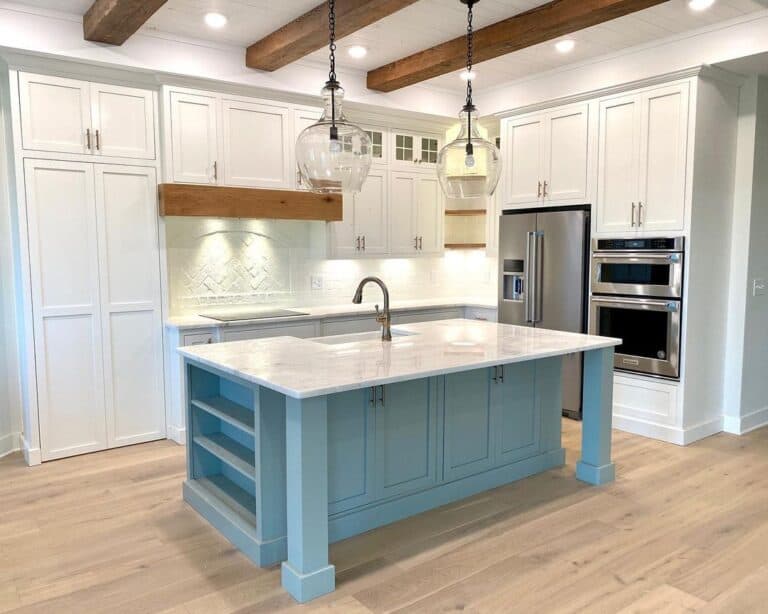Achieve a Sophisticated Look Using Ornate Legs For Kitchen Island Styles
Achieve a Sophisticated Look Using Ornate Legs For Kitchen Island Styles
Blog Article
Secret Factors To Consider for Discovering the most effective Legs For Kitchen Island for Your Layout
When picking the suitable legs for your kitchen area island, numerous crucial considerations come right into play that can substantially affect both functionality and aesthetic appeals. The option of product, height, and design should straighten with your overall cooking area design to make certain a harmonious appearance. Additionally, security and maintenance needs are vital for long-term usage and convenience of care. Understanding these aspects can enhance your kitchen area's usefulness and visual charm, but the subtleties of each consideration can typically be overlooked. What ramifications might these choices carry your cooking area's general ambience?
Determine Your Design Preference
Identifying your design preference is crucial when choosing the excellent legs for your kitchen area island. The legs of your kitchen area island not just offer a useful purpose but also contribute significantly to the overall aesthetic of the space. Therefore, identifying your design style-- be it modern, rustic, typical, or commercial-- is essential.
For a modern-day kitchen, take into consideration sleek, minimalistic legs that enhance open rooms and clean lines. In contrast, a rustic setup might gain from more durable, farmhouse-style legs made of redeemed materials. Traditional kitchens often prefer transformed or ornate legs, which can include a touch of sophistication and elegance. A commercial aesthetic could call for metal legs that emphasize a raw, incomplete appearance.
Furthermore, take into consideration the elevation and percentage of the legs in relationship to the island's surface area. Eventually, your design preference will certainly affect not just the choice of legs but likewise the general consistency of your cooking area's layout.
Pick the Right Product
Picking the appropriate product for your cooking area island legs is pivotal in ensuring both toughness and visual charm. Various materials offer distinct advantages, and the selection often reflects your style choices and practical demands.
Wood is a popular choice, providing heat and adaptability. It can be discolored or repainted to match your kitchen style, making it versatile to numerous styles, from rustic to modern. Nonetheless, wood might need regular maintenance to maintain its appearance and honesty.

If you seek an one-of-a-kind touch, consider acrylic or glass materials. They can create an illusion of area and lightness in your cooking area, making them an excellent choice for smaller locations - Legs For Kitchen Island. Nonetheless, these options might require careful handling and upkeep to stay clear of scrapes.
Ultimately, the product you pick ought to align with your kitchen's total style, ensuring that the legs offer both attractive and functional functions.
Consider Height and Percentages
When developing a kitchen area island, elevation and percentages play a vital duty in making sure performance and convenience. The conventional elevation for a kitchen island generally varies from 36 to 42 inches, straightening with conventional counter elevations or bar elevations, specifically. This dimension is important for harmonizing with bordering stools and countertops, making it possible for convenience of usage during dish prep work and social interactions.
Additionally, the island's percentages have to match the overall kitchen design. A well-proportioned island ought to not overwhelm the room; rather, it should develop a well balanced visual. Take into consideration the ratio between the island's size and length, guaranteeing it supplies sufficient area without crowding the cooking area. A general standard is to preserve a width of 24 to 48 inches, promoting activity and availability.
Moreover, the elevation of the legs or base can influence the visual allure and performance. Taller legs might offer a more modern-day, airy feeling, while much shorter ones can Visit This Link evoke a typical, grounded appearance. Eventually, meticulously thinking about elevation and proportions will cause a kitchen area island that is visit the site both functionally efficient and visually enticing, boosting the total layout of the space.
Assess Stability and Longevity
A kitchen area island's legs need to not just enhance its height and proportions yet also offer appropriate security and longevity to support everyday tasks. The legs are essential to the overall performance of the island, as they birth the weight of the kitchen counter and any type of added lots, such as appliances or food preparation tasks.
When evaluating security, it is important to think about the leg layout and product. Sturdy steel or strong wood legs usually offer superior strength contrasted to lighter materials like engineered wood or plastic. Additionally, a larger base can enhance stability, reducing the threat of wobbling or tipping throughout usage.
Longevity is just as vital; the legs need to withstand wear and tear from daily usage. Think about coatings that protect against scrapes, damages, and moisture, specifically in a kitchen setting. Furthermore, assess the top quality of building, such as attachments and joints, which can dramatically influence the legs' long-lasting efficiency.
Eventually, investing in well-crafted legs that focus on security and durability will ensure your cooking area island stays a reputable workspace for several years to find, boosting your cooking experiences while keeping aesthetic allure.
Element in Upkeep and Care
Upkeep and care are crucial factors to consider for making sure the long life and performance of cooking area island legs. When selecting legs, it is necessary to assess the materials made use of, as different alternatives require varying degrees of upkeep. Wood legs may require regular refinishing or securing to prevent wetness damages and scrapes, while metal legs may need normal brightening to maintain their shine and protect against corrosion.
In addition, the finish related to the legs can influence maintenance requirements. A high-gloss layer may be simpler to tidy yet can reveal scrapes and fingerprints much more easily than a why not try here matte surface. It is suggested to pick products and coatings that match your way of living; for instance, if you frequently host gatherings, select resilient materials that can hold up against wear and tear.
Additionally, consider the cleaning procedure associated with keeping these legs. Smooth surface areas typically need very little effort, while elaborate styles may accumulate dust and gunk, requiring more labor-intensive cleaning methods. Legs For Kitchen Island. Inevitably, considering the upkeep and care needed for your chosen cooking area island legs will certainly not just improve their visual charm however also ensure their useful honesty gradually
Final Thought
To conclude, picking the optimum legs for a cooking area island requires careful factor to consider of numerous factors, consisting of design style, product selection, upkeep, stability, and elevation. Each aspect plays a vital function in ensuring that the legs not just improve the visual charm of the cooking area yet additionally give the required support and toughness for daily use. An educated decision will inevitably add to a useful and visually pleasing cooking area atmosphere.
The legs of your kitchen island not just offer a practical function yet also contribute substantially to the general aesthetic of the space.Upkeep and treatment are vital considerations for guaranteeing the long life and performance of kitchen area island legs. Wood legs may need routine refinishing or sealing to stop dampness damage and scrapes, while steel legs may require normal polishing to preserve their sparkle and prevent rust.
Inevitably, factoring in the upkeep and care needed for your picked kitchen island legs will not only improve their visual appeal however likewise guarantee their useful integrity over time.

Report this page